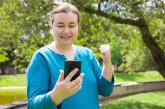Article

Do electronic reminder systems help patients with T2DM to lose weight?
- Author:
- William Kwan, MD
- Jon O. Neher, MD
- Sarah Safranek, MLIS
EVIDENCE-BASED ANSWER: PROBABLY NOT—but they may augment self-management. Four-component telehealth systems—including electronic reminders,...
